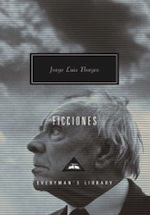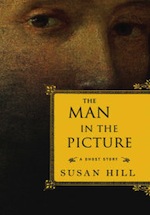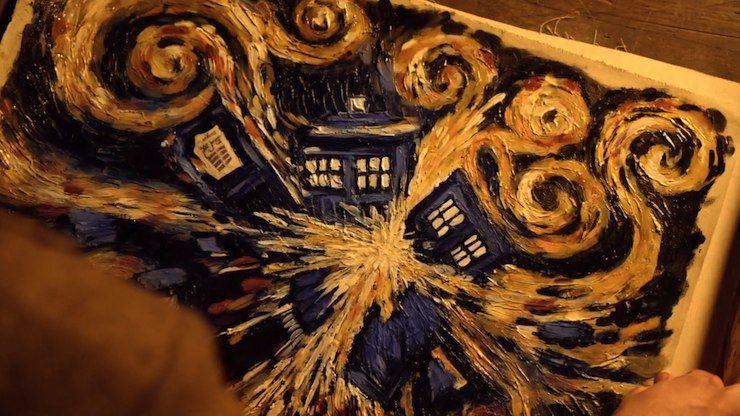A novel within a novel. A comic, painting, or song within a novel. Many writers enjoy the playfulness of creating fictitious works of art that no one will ever read, see, or hear.
I, too, love to play this game. Fictitious paintings and photographs lie at the heart of my genre-crossover novel, Sleeping Embers of An Ordinary Mind. It’s been immense fun to write, and during the long drafting and editing process, I’ve re-visited several novels, and read new releases, that share this compelling theme. Here are five of my personal favorites.
Station Eleven by Emily St. John Mandel
 Emily St. John Mandel depicts a post-apocalyptic world in which her characters desire more than mere survival. The central character, Kirsten, safeguards her own personal art treasures—two hand-drawn comic books, the hero of which is Dr. Eleven. Mandel’s interweaving and beautifully written narrative flits back and forth in time, connecting Kirsten with characters in the pre-apocalyptic world, including Miranda, the author of the unpublished comics.
Emily St. John Mandel depicts a post-apocalyptic world in which her characters desire more than mere survival. The central character, Kirsten, safeguards her own personal art treasures—two hand-drawn comic books, the hero of which is Dr. Eleven. Mandel’s interweaving and beautifully written narrative flits back and forth in time, connecting Kirsten with characters in the pre-apocalyptic world, including Miranda, the author of the unpublished comics.
“The Approach to Al-Mu’tasim” in Fictions by Jorge Luis Borges
 Borges is a brilliant, surreal, and fantastical writer who frequently blurs the boundary between reality and illusion. “The Approach to Al-Mu’tasim” is a short story that comprises a detailed review of a fictitious book, The Conversation with the Man Called Al-Mu’tasim: A Game of Shifting Mirrors, by a fictional author, Mir Bahadur Ali. The narrator even highlights the differences between two editions of the book. In a later autobiographical essay, Borges related that people took “The Approach to Al-Mu’tasim” at face value, and one of his friends tried to order a copy of the book from London.
Borges is a brilliant, surreal, and fantastical writer who frequently blurs the boundary between reality and illusion. “The Approach to Al-Mu’tasim” is a short story that comprises a detailed review of a fictitious book, The Conversation with the Man Called Al-Mu’tasim: A Game of Shifting Mirrors, by a fictional author, Mir Bahadur Ali. The narrator even highlights the differences between two editions of the book. In a later autobiographical essay, Borges related that people took “The Approach to Al-Mu’tasim” at face value, and one of his friends tried to order a copy of the book from London.
Breakfast of Champions by Kurt Vonnegut
 Kilgore Trout, a little-known pulp fiction author, is a character in several of Kurt Vonnegut’s stories and novels, including Slaughterhouse-Five (one of my favorite novels). In Breakfast of Champions, one of Trout’s stories has a devastating impact on wealthy Pontiac dealer Dwayne Hoover. He’s convinced by Trout’s story that he, the reader, is the only person alive with free will. He believes he’s surrounded by a race of robots and, terrified, embarks on a bloody rampage.
Kilgore Trout, a little-known pulp fiction author, is a character in several of Kurt Vonnegut’s stories and novels, including Slaughterhouse-Five (one of my favorite novels). In Breakfast of Champions, one of Trout’s stories has a devastating impact on wealthy Pontiac dealer Dwayne Hoover. He’s convinced by Trout’s story that he, the reader, is the only person alive with free will. He believes he’s surrounded by a race of robots and, terrified, embarks on a bloody rampage.
The Man in the Picture by Susan Hill
 A Cambridge professor invites his former student to his university rooms where a small oil painting hangs on his wall—a disturbing scene at a masked carnival in Venice. A male figure in the foreground is restrained by two partygoers. He stares out of the painting as though trying to escape into the professor’s room. It’s a gothic ghost story in which the spooky painting entraps the professor and his unsuspecting student.
A Cambridge professor invites his former student to his university rooms where a small oil painting hangs on his wall—a disturbing scene at a masked carnival in Venice. A male figure in the foreground is restrained by two partygoers. He stares out of the painting as though trying to escape into the professor’s room. It’s a gothic ghost story in which the spooky painting entraps the professor and his unsuspecting student.
Never Let Me Go by Kazuo Ishiguro
 The children incarcerated at Hailsham boarding school spend endless hours in art classes, engaged in creative activities in the hope of winning praise from the school’s patron, Madame. They believe their best paintings and drawings will be exhibited in her London gallery. But it’s a ruse. Madame uses the paintings as evidence, hoping to convince society that the cloned children are truly human and should be treated better. In this heartbreaking coming-of-age novel, Tommy agonizes over his inability to paint, instilling pity in his friend Cathy, and contempt among other classmates. Ishiguro, a one-time songwriter himself, takes the title of this novel from the lyrics of a fictitious song.
The children incarcerated at Hailsham boarding school spend endless hours in art classes, engaged in creative activities in the hope of winning praise from the school’s patron, Madame. They believe their best paintings and drawings will be exhibited in her London gallery. But it’s a ruse. Madame uses the paintings as evidence, hoping to convince society that the cloned children are truly human and should be treated better. In this heartbreaking coming-of-age novel, Tommy agonizes over his inability to paint, instilling pity in his friend Cathy, and contempt among other classmates. Ishiguro, a one-time songwriter himself, takes the title of this novel from the lyrics of a fictitious song.
Anne Charnock‘s debut novel, A Calculated Life, was a finalist for the 2013 Philip K. Dick and Kitschies Golden Tentacle Awards. Her writing career began in journalism, and her articles appeared in the Guardian, New Scientist, International Herald Tribune, and Geographical. Her latest novel, Sleeping Embers Of An Ordinary Mind, spans from the 15th to the 22nd centuries in a multilayered narrative that asks questions about legacy, storytelling, and buried secrets. Find Anne on Twitter @annecharnock.










